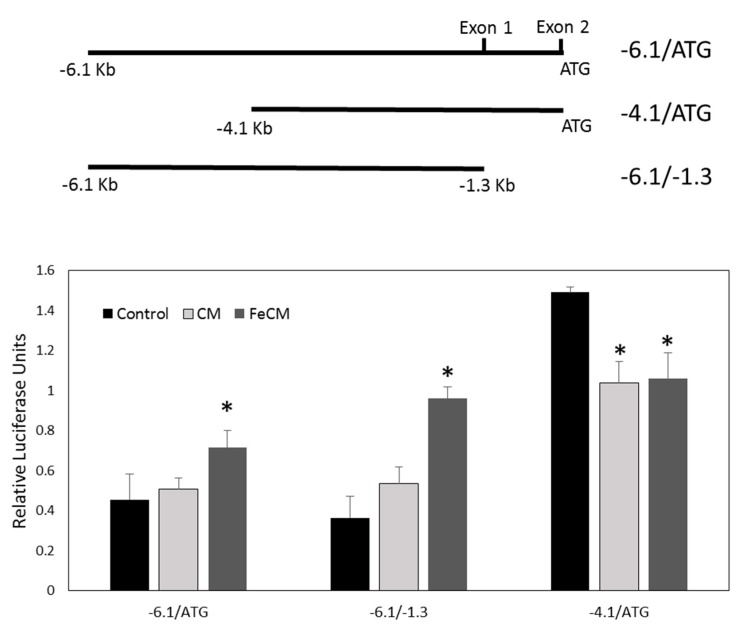Figure 7.
SNCA transcriptional activity. We wished to determine if the change in α-syn protein levels in cells treated with iron-fed microglial conditioned medium was due to a change in activity of the promoter of cytosolic protein alpha-synuclein (α-syn), SNCA. We used three reporter constructs containing fragments of the SNCA promoter that drive luciferase expression when transcriptionally active. The fragments are illustrated by the schematic which shows the overlap with the main features of the SNCA promoter. −6.1/ATG covers the majority of the promoter as well as the 5′ non-coding domain prior to the start codon. −6.1/−1.3 covers the same part of the promoter as −6.1/ATG but excludes the non-coding exons. The fragment −4.1/ATG excludes 2 kb of the sequence at the 5′ end of the promoter. SH-SY5Y cells were transiently transfected with the three constructs and the cells were treated for 24 h with either serum free medium (control), conditioned medium from C8B4 microglia (CM) or conditioned medium from iron-fed C8B4 microglia (FeCM). Readout of luciferase activity showed that conditioned medium from C8B4 microglia had no significant effect on the −6.1/ATG or −6.1/−1.3 promoter fragment, while iron-fed conditioned medium caused a significant increase (p < 0.05) in activity. In contrast the conditioned medium from both kinds of microglia decreased the activity seen with the −4.1/ATG fragment. The difference in activity suggests that the change in expression of α-syn may come from binding of a transcription factor between −6.1 and −4.1 on the SNCA promoter in response to a factor in iron-fed microglia conditioned medium. Shown are the mean and S.E.M. of four separate experiments.

